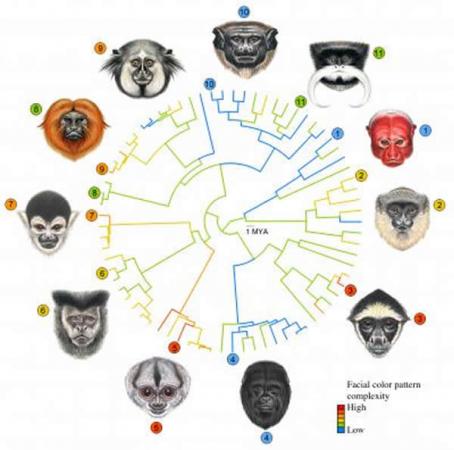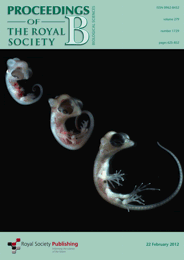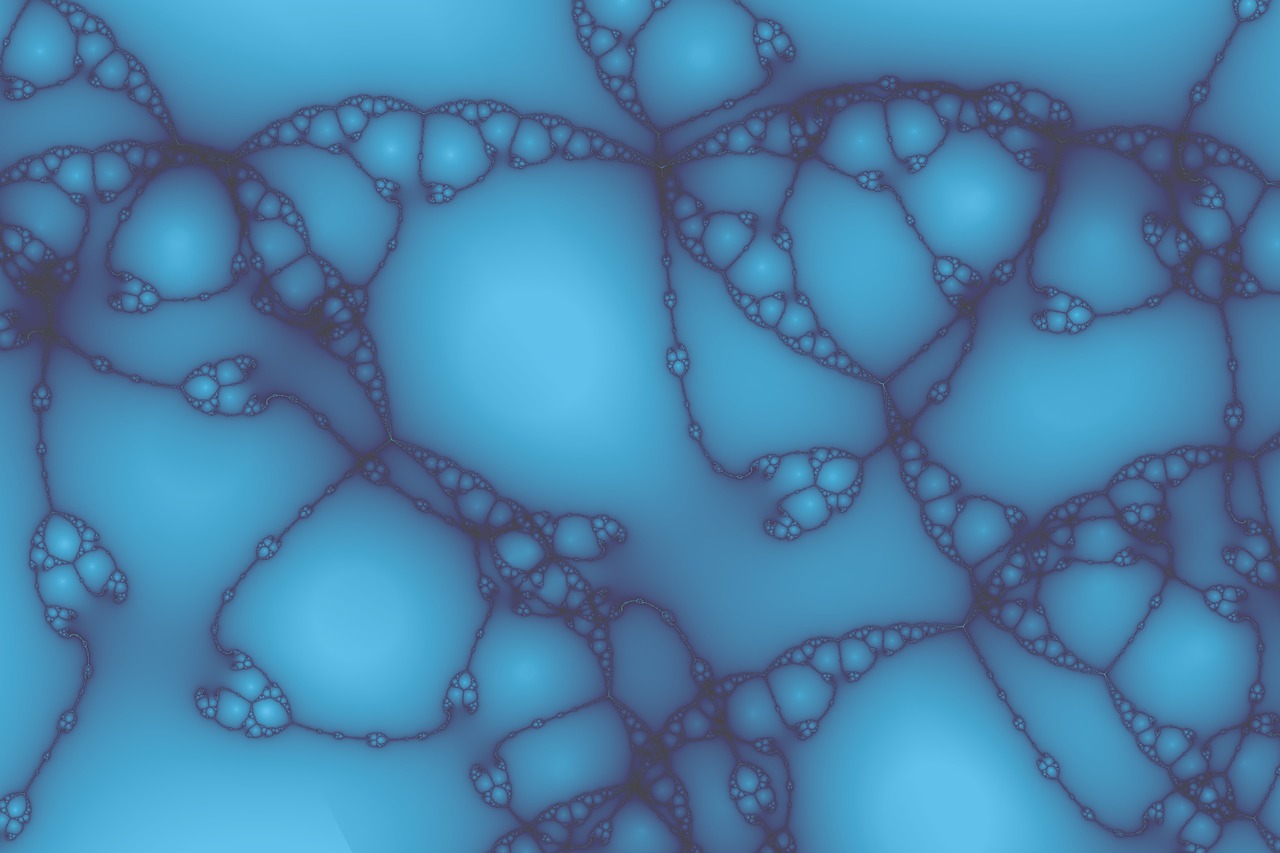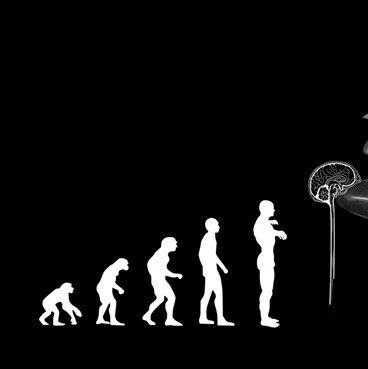
中南美洲雄性灵长类的脸部特征,颜色越亮说明面部特征越复杂。引自Stephen Nash
加利福利亚大学洛杉矶分校的生物学家研究了来自中南美洲的129只雄性灵长动物的脸部特征,他们发现这些脸部代表了至少2400万年的进化史。Michael Alfaro说,现代世界的灵长类所拥有的脸部特征丰富程度是我们无法想象的,比如浅红色的脸、胡子、头发等。现今还没有关于灵长类脸部特征进化的研究,洛杉矶分校的研究算是开先河了。
灵长类有独居也有群居,研究者将它们的脸部分为14个区域,记录颜色(包括毛发和皮肤),分析解剖学特征,并给出一个“复杂程度分数”。他们研究了脸部特征的进化过程与社会系统的结构。为了弄清环境与脸部颜色的关系,他们还分析了诸多环境变量,比如利用栖息地的经纬度来代表日晒程度和温度。同时,他们还利用统计学方法分析了灵长类的进化谱系图。Sharlene Santana说,结果令人惊讶但却确信无疑,一个物种如果所在的群体越大,它们的脸就越简单、越平整,因为它们需要用更多的脸部表情来交流,而脸越平整和简单,在传递信息时就越容易,比如人类的脸就非常平整。Santana说,最初他们以为群体越大,为了辨认需要,脸部特征分异度就该越大,然而结果却并非如此。Jessica Lynch Alfaro说,结果显示脸部信息表达在社会化群体中重要程度逐渐增大。
进化生物学家还发现,生活于物种间关系更紧密的环境中的灵长类,无论其族群大小,它们的脸部特征都很复杂。Santana解释说,这可能是为了防止种间杂交的种内辨识需要而产生的。
研究者还发现生态环境能够控制灵长类的脸部特征。生活在赤道附近的灵长类,它们眼部周围的皮肤和毛发会变黑,而潮湿环境和浓密森林中灵长类的鼻子和嘴周围的脸部会变黑。当远离赤道,气候变冷时,脸部毛发就会变长,这可能是为了控制体温。Alfaro说,这项研究是理解脸部特征分异的良好开局,现在我们已经明白社会化程度、社会行为和生态环境都会对脸部特征产生影响。
研究者计划利用计算机辨识软件来量化灵长类脸部特征,食肉动物(包括大型猫科动物)脸部特征的研究也在他们的计划之中。Santana说,研究数据还显示,就算一个物种已经进化到拥有一种特定的肤色,它们也还能够再变回原来的颜色,这反驳了之前学界的普遍认识。
对人类来讲,人类并不拥有所有灵长类具有的脸部结构,这种简化会不会导致表达的不便,目前仍不清楚。

Adaptive evolution of facial colour patterns in Neotropical primates
Sharlene E. Santana, Jessica Lynch Alfaro and Michael E. Alfaro
The rich diversity of primate faces has interested naturalists for over a century. Researchers have long proposed that social behaviours have shaped the evolution of primate facial diversity. However, the primate face constitutes a unique structure where the diverse and potentially competing functions of communication, ecology and physiology intersect, and the major determinants of facial diversity remain poorly understood. Here, we provide the first evidence for an adaptive role of facial colour patterns and pigmentation within Neotropical primates. Consistent with the hypothesis that facial patterns function in communication and species recognition, we find that species living in smaller groups and in sympatry with a higher number of congener species have evolved more complex patterns of facial colour. The evolution of facial pigmentation and hair length is linked to ecological factors, and ecogeographical rules related to UV radiation and thermoregulation are met by some facial regions. Our results demonstrate the interaction of behavioural and ecological factors in shaping one of the most outstanding facial diversities of any mammalian lineage.
文献链接:https://rspb.royalsocietypublishing.org/content/early/2012/01/11/rspb.2011.2326








